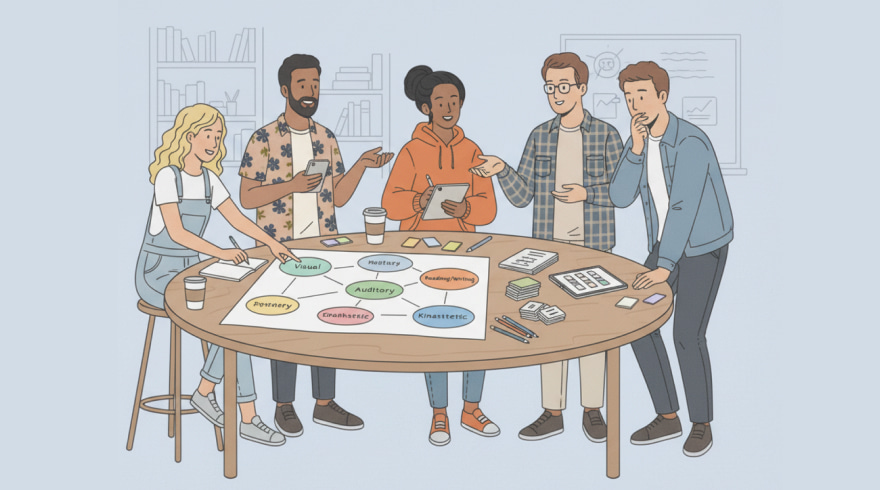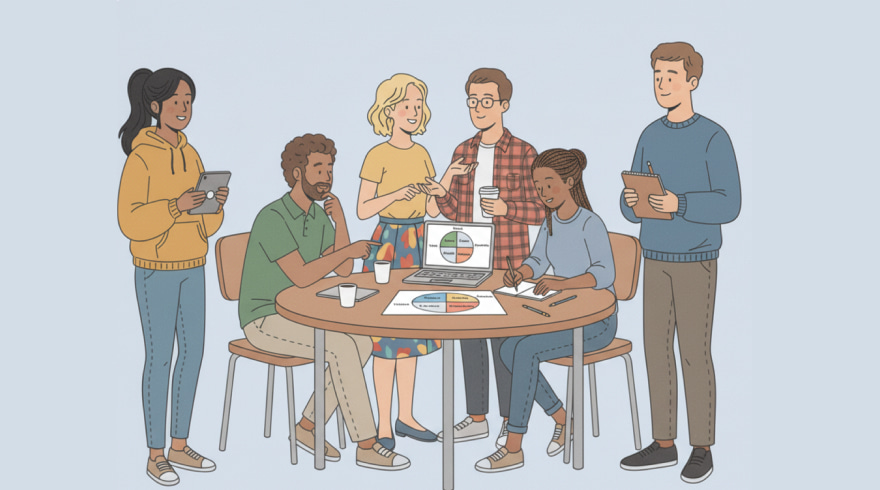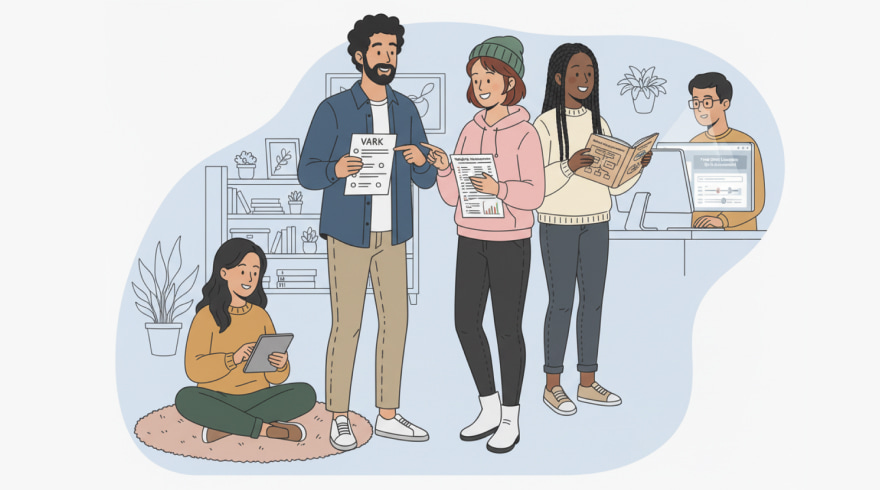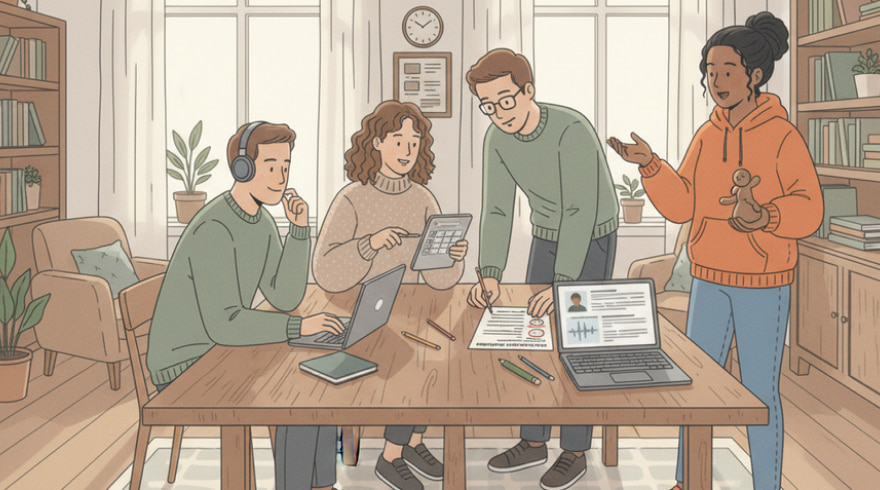The Complete Guide to Understanding and Using Learning Style Assessments
- 30 October 2025

Why Understanding Your Learning Style Matters
Most people study harder when they could study smarter, and that difference often stems from knowing how the brain prefers to take in, transform, and remember information. A thoughtful approach to learning begins with self-awareness: recognizing whether you lean toward visuals, narration, hands-on practice, or reflective synthesis. When you can label a preference, you can also select better strategies, improve time-on-task efficiency, and reduce the frustration that comes from one-size-fits-all study tactics. Educators, coaches, and team leads also benefit, because instruction and training become more targeted, measurable, and humane.
Beyond personal insight, a structured questionnaire can reveal patterns that casual reflection misses, such as mismatches between how you like to learn and how you are being taught. Many newcomers start with the learning style assessment free tools offered by reputable education nonprofits to get a baseline. After an initial snapshot, you can iterate by pairing results with habits like spaced repetition, retrieval practice, and multimodal note-making. Over time, even small adjustments, reorganizing lecture notes into diagrams, narrating processes out loud, or building tactile prototypes, produce compounding gains in comprehension and confidence.
How Assessments Work: Frameworks, Questions, and Scoring
Most instruments ask scenario-based questions that map everyday choices to underlying cognitive preferences. Instead of asking, “Are you visual?”, the item might pose a situation like assembling furniture and offer options that reflect reading diagrams, following spoken instructions, or learning by doing. Answers aggregate into profiles that describe tendencies, not absolutes, which is crucial because human learning is fluid and context dependent. Good assessments also provide guidance for next steps, translating raw scores into practical study moves you can try immediately.
Behind the scenes, frameworks such as VARK, Kolb’s experiential cycle, and Honey-Mumford typologies anchor the scoring logic. Each model emphasizes different dimensions, input modality, processing style, or experiential phases, so validity improves when you read the report in light of your goals. When the purpose is fast orientation, brief surveys are appropriate; when the stakes are higher, richer diagnostics with reliability checks are preferable. Regardless of the model, usability matters: clear wording, neutral examples, and transparent interpretations reduce bias and increase trust.
For quick benchmarking during a busy semester or onboarding sprint, a concise and accessible option is a well-reviewed free learning style assessment that summarizes strengths and offers a few actionable tips. To deepen insight, track how specific strategies affect outcomes such as quiz scores, project speed, and retention at 30-day intervals. Treat the process like an experiment: form a hypothesis based on your profile, apply an intervention, and measure what changes, then adjust accordingly.
Benefits for Students, Professionals, and Educators
Clarity about learning preferences translates into real-world improvements that compound over time. Students can tailor note-taking, select media that fit the task, and build study plans that reduce cramming while boosting recall. Professionals gain a competitive edge by matching training formats to complex workflows, accelerating certification prep, and shortening time-to-competence on new tools. Instructors amplify impact by diversifying delivery, designing assessments that capture genuine understanding, and improving inclusion for neurodiverse learners.
If you’re exploring options before a new course, it’s convenient to start with a browser-based screener like a respected free online learning style assessment that produces a crisp profile and straightforward suggestions. Small changes, integrating sketch-notes during lectures, narrating steps while practicing, or scheduling reflective debriefs, often yield immediate wins. Longer-term, the benefits include reduced cognitive overload, stronger metacognition, and more resilient motivation when topics turn challenging or abstract.
- Personalize study sessions with modality-matched techniques.
- Reduce wasted time on materials that fight your preferences.
- Strengthen memory by layering modalities on difficult topics.
- Increase engagement through purposeful, varied practice.
- Communicate needs to teachers, mentors, or managers with concrete language.
Popular Models and What Your Results Mean
Different models illuminate different parts of the learning process. VARK emphasizes preferred input channels, Kolb maps the experiential cycle from concrete doing to abstract thinking, Honey-Mumford categorizes tendencies into Activist, Reflector, Theorist, and Pragmatist, while Felder-Silverman examines continua like sensing/intuitive and sequential/global. None of these is a cage; they are lenses. Using multiple lenses helps you avoid oversimplification and reveals how context shifts your approach, for instance, preferring diagrams in math but walkthroughs in software.
Use the comparison below to orient quickly, then read your report through the lens that best fits your task, memorization, concept synthesis, creative problem-solving, or procedural mastery.
| Model | Core Dimensions | Typical Outputs | Best For |
|---|---|---|---|
| VARK | Visual, Aural, Read/Write, Kinesthetic | Modality preference profile | Selecting study media and note formats |
| Kolb | Concrete–Abstract, Active–Reflective | Diverger, Assimilator, Converger, Accommodator | Designing experiential cycles and projects |
| Honey-Mumford | Activist, Reflector, Theorist, Pragmatist | Behavioral learning tendencies | Workshop planning and team development |
| Felder–Silverman | Sensing–Intuitive, Visual–Verbal, Active–Reflective, Sequential–Global | Multi-axis preference mapping | Course design and technical learning paths |
Remember that profiles are descriptive, not prescriptive, and you can flex across modalities with practice. After previewing these models, many learners solidify insights by completing a concise free learning style self assessment and then experimenting with two or three strategy shifts for a full study cycle. Track outcomes with simple metrics, time spent, error rates, and delayed recall, so you separate what feels good from what actually works.
Putting Insights Into Action
Once you have a profile, the real value arrives when you translate it into behaviors you can maintain under pressure. Start by aligning the hardest topics with your strongest modality to build momentum, then gradually introduce a second modality to round out understanding. For example, pair schematic diagrams with five-minute verbal summaries, or follow a hands-on lab with a reflective write-up. This layered approach strengthens encoding and transfer, making what you learn usable in new contexts.
- Convert dense readings into mind maps or flowcharts.
- Record short audio reflections after practice sets.
- Teach a concept to a peer using a whiteboard walkthrough.
- Simulate exam conditions with retrieval practice timers.
- Batch similar tasks to protect focus and reduce context switching.
As you iterate, maintain a learning log with brief notes on what strategy you tried and how it affected performance. For a broad starting point that avoids paywalls, many learners calibrate their plan after completing a reputable free assessment of learning styles and then reassess in four weeks. By treating your study process like product development, hypothesize, test, review, you’ll create a sustainable system that adapts as courses and workplace demands evolve.
Choosing Reliable Tools and Avoiding Pitfalls
Quality varies widely, so look for instruments with clear constructs, transparent scoring, and practical guidance. Beware quizzes that ask leading questions, produce rigid labels, or gate basic results behind aggressive upselling. A credible tool will explain limitations, encourage multimodal strategies, and invite reflection instead of promising a magic category that solves everything. Read user reviews, check whether educators cite the instrument, and verify that recommendations connect to evidence-based techniques such as spacing, retrieval, and dual coding.
When speed matters but you still want coherence, a balanced option is to try a concise free learning style assessment test and then validate its suggestions against your own performance data. Avoid the trap of confirmation bias by deliberately practicing in a nonpreferred modality for a small portion of your study time. That “cross-training” builds resilience, which pays off during novel tasks, unfamiliar interfaces, or high-stakes assessments where flexibility is decisive.
Kolb’s Experiential Learning Cycle Explained
Kolb frames learning as a cycle: experiencing, reflecting, conceptualizing, and experimenting. You might start with a concrete task, step back to analyze what happened, form general principles, and then test those ideas in a new situation. People often gravitate toward one phase, diving in, pausing to reflect, theorizing, or hands-on testing, but the deepest learning comes from completing the loop. This model is especially useful for labs, internships, capstones, and workplace training where iterative practice drives mastery.
To translate results into action, map your upcoming projects onto the cycle and plan activities that ensure you visit each phase intentionally. Many learners begin with a focused diagnostic like a reputable free online kolb learning style assessment before designing weekly experiments that stress-test study tactics. Instructors can scaffold courses to rotate through phases, while professionals can use the cycle to accelerate onboarding, refine processes, and document lessons learned for future teams.
FAQ: Common Questions
Are learning styles fixed traits or flexible tendencies?
They function as tendencies that shift with task demands, prior knowledge, and context. You can develop underused modalities through deliberate practice while still leaning on your strengths for difficult material.
How should I choose among different models like VARK, Kolb, or Honey-Mumford?
Pick the lens that fits your goal: media selection, experiential iteration, or behavioral tendencies. If possible, consult more than one model and look for overlapping recommendations that you can implement immediately.
What evidence-based techniques pair well with profile insights?
Combine spaced repetition, retrieval practice, interleaving, and dual coding. Use your preferences to choose formats, but keep the core methods grounded in cognitive science to protect learning under stress.
How often should I reassess my preferences?
Revisit every four to eight weeks during intensive study or after major role changes. A periodic check-in helps you spot drift, refresh strategies, and avoid getting locked into a single approach.
Can teams use these assessments for professional development?
Yes, teams can map collective strengths to design blended workshops, diversify collaboration rituals, and improve knowledge transfer. Summarize findings at the group level to guide facilitation without pigeonholing individuals.
Latest News
-
![A Complete Guide to the VARK Model and Personalized Learning Preferences]() A Complete Guide to the VARK Model and Personalized Learning Preferences Take Learning Style Assessment Online Get Started What VARK Is and Why Learning Preferences Matter The VARK framework classifies how individuals tend to absorb, process, and recall information across four modalities: Visual, Aural, Read/Write, and Kinesthetic. Instead of c...
A Complete Guide to the VARK Model and Personalized Learning Preferences Take Learning Style Assessment Online Get Started What VARK Is and Why Learning Preferences Matter The VARK framework classifies how individuals tend to absorb, process, and recall information across four modalities: Visual, Aural, Read/Write, and Kinesthetic. Instead of c... - 3 November, 2025
-
![Understanding and Using Multiple Intelligences: A Complete Assessment Guide]() Understanding and Using Multiple Intelligences: A Complete Assessment Guide Take Learning Style Assessment Online Get Started Foundations of Multiple Intelligences Test Human capability is a mosaic, not a single metric, and this insight sits at the heart of the multiple intelligences perspective. Instead of ranking people on a narrow academic scal...
Understanding and Using Multiple Intelligences: A Complete Assessment Guide Take Learning Style Assessment Online Get Started Foundations of Multiple Intelligences Test Human capability is a mosaic, not a single metric, and this insight sits at the heart of the multiple intelligences perspective. Instead of ranking people on a narrow academic scal... - 31 October, 2025
-
![The Guide to Personalized Learning Preferences and Reflective Evaluation]() The Guide to Personalized Learning Preferences and Reflective Evaluation Take Learning Style Assessment Online Get Started Why Personalizing How You Learn Changes Results Most people study harder when they feel progress is within reach, yet effort alone doesn’t guarantee improvement. The real unlock is making your study tactics fit the wa...
The Guide to Personalized Learning Preferences and Reflective Evaluation Take Learning Style Assessment Online Get Started Why Personalizing How You Learn Changes Results Most people study harder when they feel progress is within reach, yet effort alone doesn’t guarantee improvement. The real unlock is making your study tactics fit the wa... - 29 October, 2025



